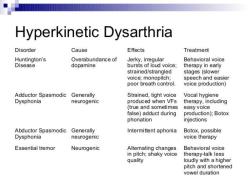What are the goals of physical therapy?
The goals of physical therapy can vary depending on the individual's condition and needs, but in general, physical therapy aims to enhance health and mobility by addressing a wide range of physical issues. Here are some common goals of physical therapy:
Pain Reduction: Physical therapists work to reduce or eliminate pain caused by various conditions, injuries, or surgeries. They use techniques such as manual therapy, modalities (e.g., heat or cold therapy), and therapeutic exercises to manage pain.
Improved Mobility and Function: Physical therapy aims to improve an individual's ability to move and perform daily activities. This includes increasing joint range of motion, muscle strength, balance, and coordination.
Rehabilitation after Injury or Surgery: Physical therapists play a crucial role in helping individuals recover after injuries (e.g., fractures, sprains, or strains) and surgical procedures (e.g., joint replacements or spinal surgeries). The goal is to restore function and minimize disability.
Prevention and Education: Physical therapists provide guidance on injury prevention, ergonomics, and posture. They educate patients on proper body mechanics to reduce the risk of future injuries.
Rehabilitation from Neurological Conditions: For individuals with neurological conditions such as stroke, multiple sclerosis, or Parkinson's disease, physical therapy helps improve mobility, strength, and overall function.
Cardiovascular Conditioning: In cases of heart disease or cardiac surgery, physical therapy can assist in cardiovascular conditioning, helping patients regain stamina and endurance.
Management of Chronic Conditions: Physical therapy can be beneficial for managing chronic conditions like arthritis, fibromyalgia, or chronic pain. Therapists work on pain management strategies and maintaining functional independence.
Gait Training: Improving walking patterns and restoring normal gait is a common goal in physical therapy, especially after injuries or surgeries that affect mobility.
Sports Rehabilitation: Athletes often turn to physical therapy to recover from sports-related injuries, enhance performance, and prevent future injuries.
Balance and Fall Prevention: Physical therapists help individuals improve their balance and reduce the risk of falls, especially in older adults.
Respiratory Care: For individuals with respiratory conditions such as COPD or after lung surgeries, physical therapists may assist in breathing exercises and improving lung function.
Adaptation to Assistive Devices: Physical therapists help individuals adapt to mobility aids like crutches, canes, wheelchairs, or prosthetic limbs.
Pain Management: In cases of chronic pain, physical therapists use various techniques, including manual therapy, therapeutic exercises, and modalities, to manage and alleviate pain.
Enhancing Quality of Life: Ultimately, physical therapy aims to improve an individual's overall quality of life by enhancing physical function, reducing pain, and promoting independence in daily activities.
It's important to note that the goals of physical therapy are highly individualized and tailored to the specific needs and conditions of each patient. A physical therapist assesses the patient's condition and creates a personalized treatment plan to achieve these goals.













